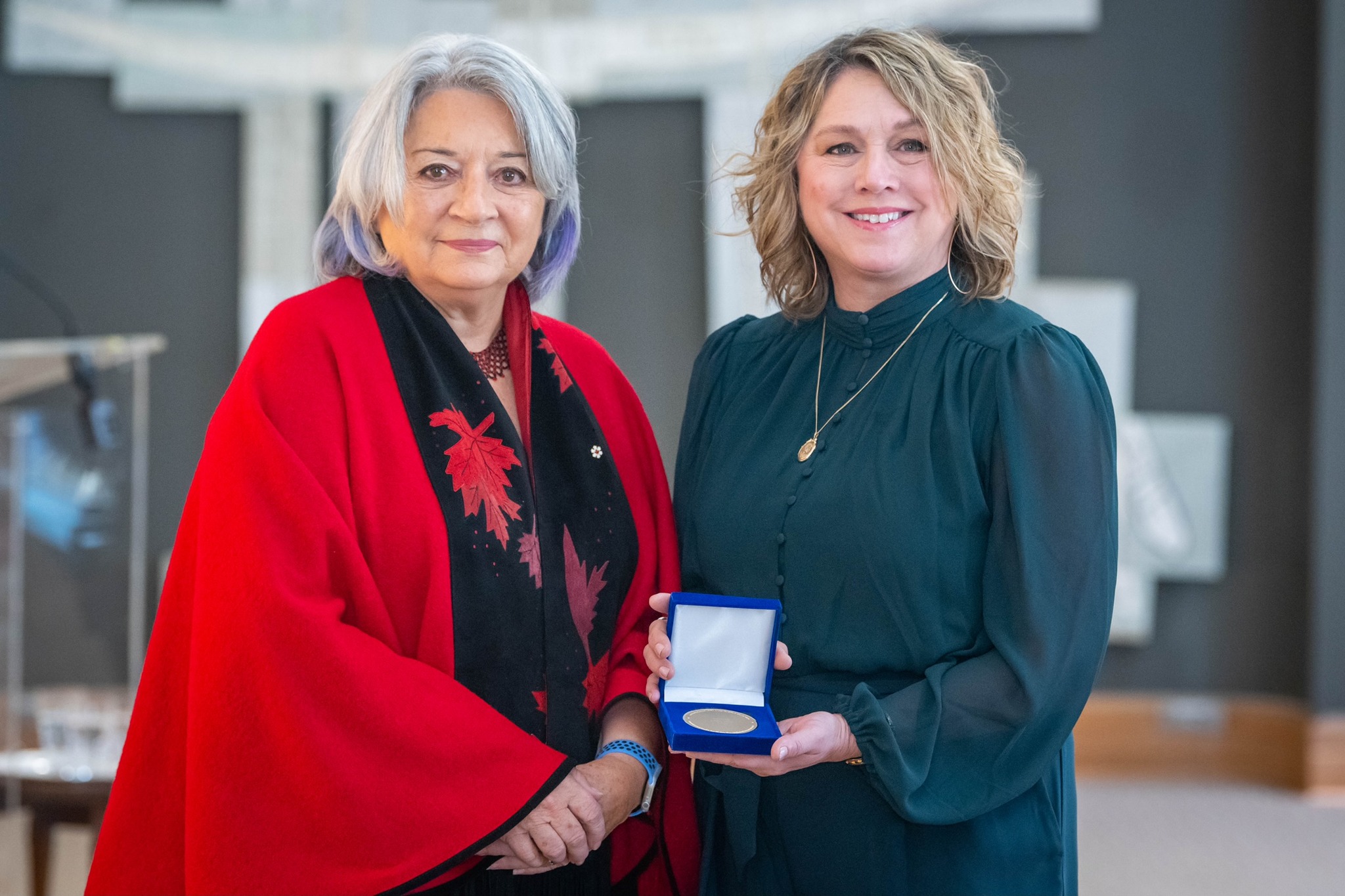Denise LeBlanc can’t recall ever hearing the word “Holocaust” when she was in school, even while being taught about the Second World War.
She is determined her own students will not be deprived of that knowledge.
LeBlanc, the teacher of grades 5 and 6 in a small school in Rimouski, Que., is the winner of the annual Governor General’s History Award for Excellence in Teaching for a year-long project she created in 2020-2021 integrated into several subjects.
The citation recognizes her for encouraging children to become aware of the facts of a dark chapter in history while highlighting the empathy and moral resistance that could not be extinguished among its victims.
Her initiative stands out in a province where Holocaust education is not compulsory, and receives only cursory mention in the contemporary history course given in senior high school. Anything more than that is left to the discretion of individual teachers, who often feel ill-equipped to tackle the subject.
LeBlanc teaches at École du Grand-Pavois de Saint-Yves, a public school with about 120 students, so small grades are doubled up. Rimouski is an almost totally francophone city of 50,000 in the Lower St. Lawrence, about 500 km northeast of Montreal.
Developed in collaboration with the Montreal Holocaust Museum (MHM), the project introduced LeBlanc’s students to the subject through the Heart of Auschwitz, an artifact symbolic of death camp prisoners clinging to their humanity. Given to Fania Fainer on her 20th birthday in 1944, the heart-shaped booklet was made clandestinely with scraps of fabric and paper by a fellow female inmate and contains birthday wishes from others.
The students viewed the object as part of a virtual tour of the MHM exhibition which focuses on the experiences of the individual, typically a survivor who rebuilt their life in Canada.
After learning the story behind the little purple booklet, the students made their own versions.
They also met by videoconference with survivors Muguette Myers, born in Paris in 1931, who survived hiding in a French village, and Fishel Goldig, born in Ukraine in 1933, who narrowly escaped death living literally underground in a farmer’s field.
Born in the Iles de la Madeleine, LeBlanc moved to Sept-Iles on the North Shore when she was in elementary school. She has been in Rimouski since 2004.
She traces her curiosity about Nazism and the war back to an incident when she was in school.
“As an awful joke, a student drew a large swastika. When the teacher saw it, she shut the door and told us she was dropping the planned program for the class and was going to educate us. She was angry.
“It was maybe not the best way to teach the history of this genocide, but we needed to be put in our place and taught about the world. This moment really sparked my interest in the subject and inspired a lot of reading.”
To approach younger children with sensitivity, LeBlanc said she was helped immensely by the MHM’s pedagogical materials.
“As a teacher, I needed to know as much as possible so that when the questions came from the students, I could respond to them properly. I always offered students time to reflect – either out loud or by writing – to make sure that they were comfortable with what they just learned.”
Children, with their natural curiosity, have the ability to understand the past—even its horrors—while instilling in them hope for a better future, she believes.
Anne Marguet, MHM education coordinator, said she was encouraged by LeBlanc’s “remarkable dedication to teaching the difficult history of the Holocaust. Through educators like Denise, a new generation of students will understand the dangers of unchecked antisemitism and hatred.”
The Azrieli Foundation provided a copy of Muguette Myers’ memoir for each student.
“Her anecdotes were touching and helped us understand her rescue in France and the role her neighbours played. I read to the students the chapters that were more emotionally difficult to make sure they understood,” LeBlanc said.
The kids formed a close connection with Myers that continued through an exchange of cards and poems. They called her a “superhero.” LeBlanc was no less impressed: “Muguette is an incredible person. She changed my life.”

A warm bond also formed with Fishel Goldig. Students sent him many letters and a gigantic greeting card. He appreciated their perceptiveness, which left him confident that the importance of defending human rights and the dangers of hatred will stay with them for life.
The reaction from parents has been gratifying, and a little surprising, for LeBlanc.
“I received so much positive feedback from parents who thanked me for the discussions this activity inspired at home. They noticed how it affected their children’s gratitude: They are lucky to be born in Rimouski, in this city, in this time.
“Parents said they learned from their kids. I received so many testimonials that I created a PowerPoint with their emails and texts.”
LeBlanc is convinced teaching the Holocaust should be mandatory in Quebec schools—for the benefit of both students and educators.
“It’s essential to understand our whole history. The first Jewish people arrived in the 1700s—I didn’t know that. This project allowed me to understand this community’s history and contributions. It’s important because it’s part of our history. Especially after 1945 with survivor immigration, we can see how this had a huge impact on society and culture. The more I learn about history, I realize the less I know.”
